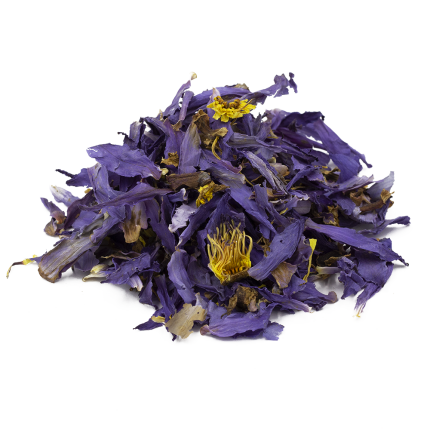

Cebil Seeds
10,00 € – 18,00 €Preisspanne: 10,00 € bis 18,00 €
Anadenanthera Colubrina, commonly known as Cebil is a South American tree with mimosa-like leaves. It has a trunk that is thorny. Several parts of the tree, including the bark, fruit and seeds contain powerful psychoactive substances. Cebil is a psychedelic plant with an ancient history of use and has been given high priority conservation status in Brazil.
Cebil History
Anadenanthera Colubrina or Cebil is a South American tree closely related to Yopo (Anadenanthera Peregrina). It is found in various parts of the continent, including Argentina, Bolivia, Peru, Brazil, Ecuador and Paraguay. The Cebil tree can be described as a fast growing plant and can grow to a height of 5-20 meters.
Anadenanthera Colubrina is known by many names throughout South America, including Willka (also spelled Wilca, Vilca, Huilca). In the Quechua language it means sacred. Native peoples of South America have been using Cebil (just like Yopo and Ayahuasca) in shamanic rituals for hundreds of years believing it to have magical properties.
Archaeological evidence found throughout Argentina, Peru, Bolivia, Chile suggests that Cebil has been used as a hallucinogen for over 4000 years.
Cultivating Cebil
Growing Cebil plants is relatively easy. Cebil seeds should be pre-soaked in sterile water for 24 hours. The water is boiled and then allowed to cool before soaking the seeds. Cebil seeds and seedlings are susceptible to rot. It is best to grow them in sandy soil. Both perlite and vermiculite are suitable. Ideally the sand should also be sterilized.
Cebil seeds require a minimum temperature of 22 °C – a constant heat source is essential for germination. If you choose to use perlite or vermiculite sand, plant the pots or seed trays about 1 cm below the surface and water lightly using a spray bottle. Make sure the growing medium is moist but not overwatered. Allow the pots/trays to sit for a while to drain excess water, then place them in a bright place out of direct sunlight. It is important to air out the pots or trays every day to prevent mold.
Under favorable conditions, Cebil seeds should germinate within a week. As soon as the seedlings begin to emerge from the ground, begin to acclimate them to drier conditions, gradually providing more aeration and watering sparingly but regularly. Allow the growing medium to almost dry between waterings. Watch for any signs of mold and make sure the conditions aren't too hot, either otherwise seedlings die quickly.
Introduce fertilizer adding occasionally to the water. Start with 1/4 of the recommended dosage, increase gradually.
Transplanting Cebil
For the first year, the Cebil plant grows slowly and still needs free-draining soil (eg a mixture of 50% cactus compost and 50% perlite).
In the second year, repot the Cebil plant in a growing medium that will be rich in organic matter, and is still fairly free-draining. 50% peat moss, 25% coconut coir and 25% perlite can be a good mix.
A 2cm layer of gravel or broken pots at the base of the pot will provide the extra drainage required. A 1cm layer of gravel or cactus mulch on the surface will prevent the perlite from floating to the surface and prevent excessive evaporation. Once established in the soil, Cebil can benefit from regular fertilizing during the summer months. It should soon start growing strongly.
Taking Care of Cebil
Cebil tree enjoys warm sun and free-draining soil. They cannot tolerate overwatering of the roots and can only withstand light frost. It is best to bring the plant indoors during the winter months.
| Packaging |
5 g. ,10 g. |
|---|---|
| EFFECTS |
Microdosing ,Improve Mood ,Dreamy |
BLOG ARTICLES & EXTERNAL LINKS
Erowid Experiences :
https://erowid.org/experiences/subs/exp_Anadenanthera_colubrina.shtml
DISCLAIMER
Read the Legal Statement before buying (especially article 6):
http://ethosherbals.com/dilosi/
With the purchase of the product you automatically accept the terms and conditions of the transaction.
By ordering any of our products of the Smartshop section of Ethos Herbals, you automatically agree to the terms and conditions.
The buyer understands that all products of Smartshop section of Ethos Herbals physical and online store are offered exclusively with the condition that will be used as samples of herbs, for legitimate research, incense, educational and/or ornamental purposes. The buyer of the product category Smartshop of Ethos Herbals understands the term "NOT SOLD FOR HUMAN CONSUMPTION".
Ethos Herbals and its representatives assume no responsibility, implied or otherwise, for any other use of our products. The information provided by the Ethos Herbals or their representatives via email, phone, fax or any other form of transmission, including links to or from this website, is purely for educational purposes only and should not in any way be construed as a recommendation for a specific treatment plan , product, or course of action.
As a buyer, do not make automatically any assumptions or statements that the information or the products listed are available, appropriate or legal outside of Greece. The person or persons who order products of our Smartshop section understand that they have to be fully aware of the laws that apply in city, state, or country. Neither Ethos Herbals nor any of its agents will be liable for damages of any kind arising in connection with your use of this site or products, including compensatory, direct, indirect or consequential damages. In any case, during the ordering process of our products, the customer must be 18 years of age or older to use our store. The submission of the order is carried out in accordance with these terms and conditions.
You must be logged in to post a review.







 Ethos Herbals Blends
Ethos Herbals Blends Cannabis
Cannabis SmartShop
SmartShop VapeShop
VapeShop Medicinal Herbs
Medicinal Herbs Cacao & Tea
Cacao & Tea Aromatherapy
Aromatherapy Ethos Lifestyle
Ethos Lifestyle
Reviews
There are no reviews yet.